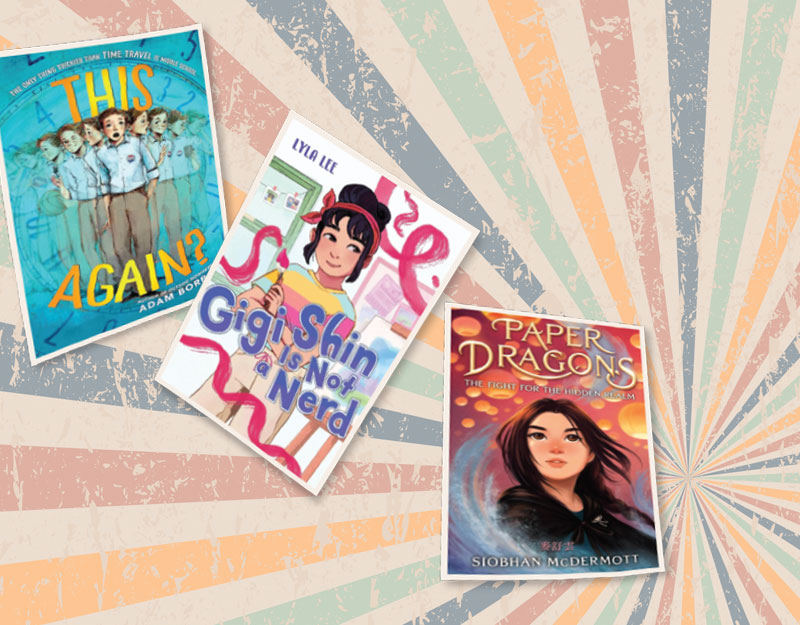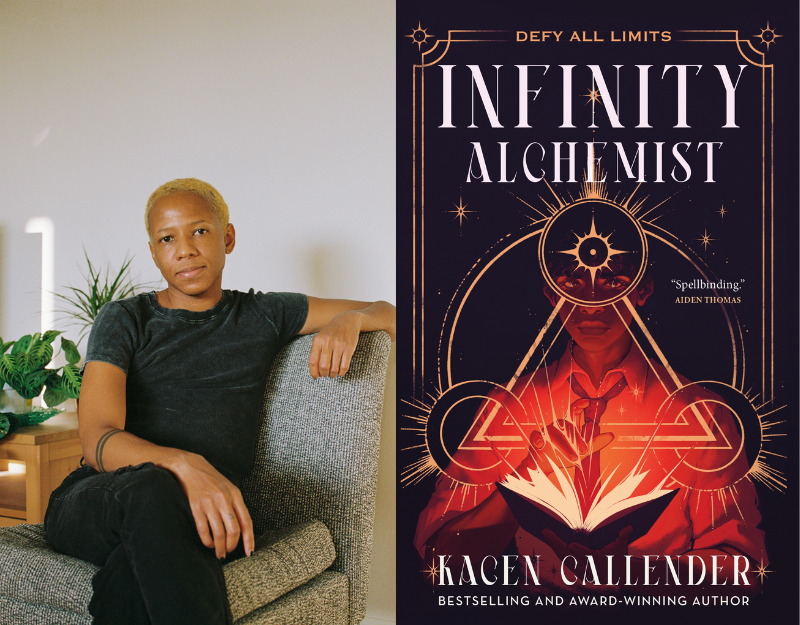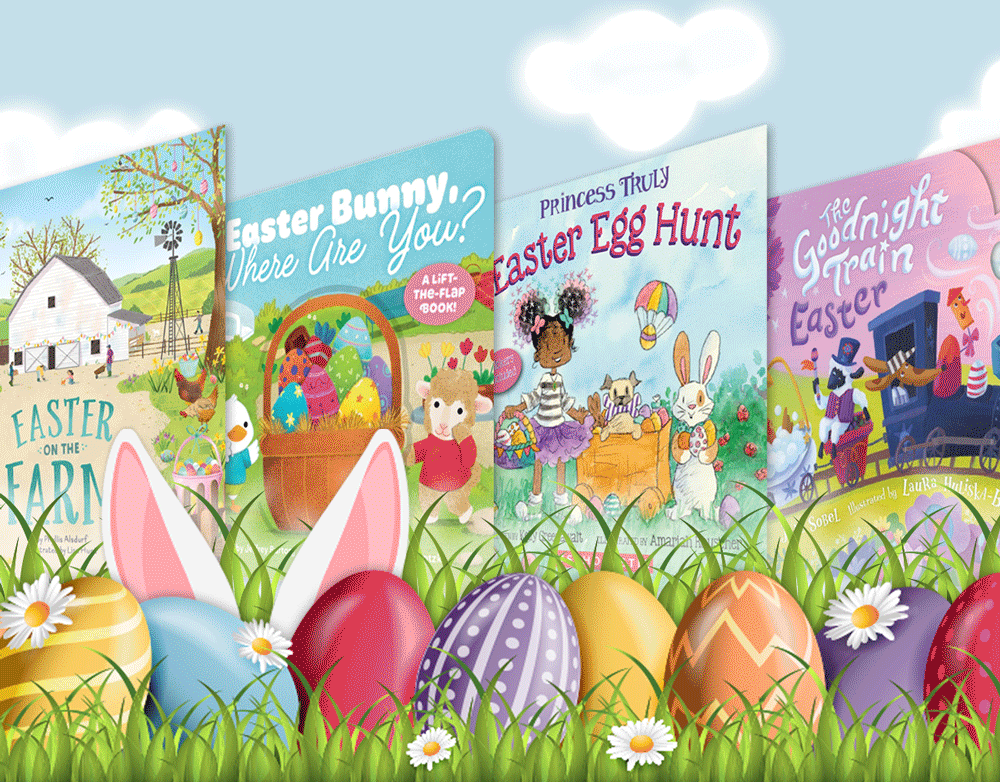Why Doesn’t Anyone Remember the Just So Stories Anymore?
 Or rather, why don’t they get reprinted with new illustrations all that often?
Or rather, why don’t they get reprinted with new illustrations all that often?
I was in the library the other day with an editor friend I know and we started discussing The Just So Stories by Rudyard Kipling. Kipling is a difficult fellow to get a grasp on. The heart and soul of colonialism in India, he also happened to be a darn good writer. Now I can take or leave The Jungle Book, but The Just So Stories . . . those were important to me as a kid.
For me, it was all about the language. Listen to this line from “The Elephant’s Child” as your example:
“Then Kolokolo Bird said, with a mournful cry, ‘Go to the banks of the great grey-green, greasy Limpopo River, all set about with fever-trees, and find out’.”
Sentences such as this demand that a tongue speak with authority and presence. Try this next one from “The Sing-Song of Old Man Kangaroo”:
“Still ran Dingo–Yellow-Dog Dingo–hungrier and hungrier, grinning like a horse-collar, never getting nearer, never getting farther; and they came to the Wollgong River.”
Almost like a song to me. Even when I couldn’t remember the words as an adult, I could remember the rhythm of this sentence, and could find it easily when I looked at the story again.
ADVERTISEMENT
ADVERTISEMENT
 So I wonder to myself, why do The Just So Stories rarely get reprinted? And why do they almost never get new illustrations? The most recent edition I find in my library system is the lovely new Puffin Classics one with an introduction from Jonathan Stroud (who writes of hearing the book, “It is like listening to the chanting of a spell.”). This I own, so I pluck it from my shelf. I see that it contains Rudyard Kipling’s own original illustrations (I forgot he was an artist as well) though like other Puffin Classics all the money goes into the Introduction and the cover and very little into the pen and ink reproductions of the illustrations, which are rather pale and spotty.
So I wonder to myself, why do The Just So Stories rarely get reprinted? And why do they almost never get new illustrations? The most recent edition I find in my library system is the lovely new Puffin Classics one with an introduction from Jonathan Stroud (who writes of hearing the book, “It is like listening to the chanting of a spell.”). This I own, so I pluck it from my shelf. I see that it contains Rudyard Kipling’s own original illustrations (I forgot he was an artist as well) though like other Puffin Classics all the money goes into the Introduction and the cover and very little into the pen and ink reproductions of the illustrations, which are rather pale and spotty.
 I look back a little further in time and see that in 2004 Candlewick put out A Collection of Rudyard Kipling’s Just So Stories, with each story bearing the mark of a different illustrator. Peter Sis, Jane Ray, and Satoshi Kitamura all contributed, which is pleasing. Before that, back in 1996 Barry Moser did one as well.
I look back a little further in time and see that in 2004 Candlewick put out A Collection of Rudyard Kipling’s Just So Stories, with each story bearing the mark of a different illustrator. Peter Sis, Jane Ray, and Satoshi Kitamura all contributed, which is pleasing. Before that, back in 1996 Barry Moser did one as well.
A couple thoughts immediately occur. First off, is it not strange that Jerry Pinkney has never illustrated a book of Just So Stories? I don’t say this simply because it would be nice to see him do so, but rather because he appears to be a bit of a Kipling fan. How else to explain why he did not only The Jungle Book but also Rikki-Tikki-Tavi?
That’s one thought. The other is that there must be something offensive in these tales that prevents them from getting published as frequently as Kipling’s other books. So I start flipping through that newly found Puffin Classic book to sniff out the offense. My results:
How the Whale Got His Throat – No problems here.
How the Camel Got His Hump – All clear.
How the Rhinoceros Got His Skin – Some mention is made of the fact that the Parsee has a hat from which “the rays of the sun were reflected in more-than-oriental splendour.” Fairly minor.
ADVERTISEMENT
ADVERTISEMENT
How the Leopard Got His Spots – Well this is a bit trickier, but it’s interesting. It’s about how both an Ethiopian and a Leopard determine the best camouflage for hunting and decide to change the color of their skin to match their surroundings. Thus the Ethiopian changes to a “fine new black skin”. It’s a rather interesting take on the matter. The skin is seen as a beautiful choice, which is surprising considering the source (or, for that matter, books like Dr. Doolittle that would try to include characters that wanted just the opposite).
The Elephant’s Child – No problems here, unless you dislike tales of spanking. Then you’re in trouble.
The Sing-Song of Old Man Kangaroo – All clear.
The Beginning of the Armadillos – A-okay.
How the First Letter Was Written & How the Alphabet Was Made – These two go together and they’re both just fine.
The Crab That Played With the Sea – Fine and fish hair.
The Cat That Walked By Himself – Sublime.
The Butterfly That Stamped – So THAT is where I heard this story oh so many years ago! Well, there’s some polygamy, but I love how it clarifies, “He didn’t really want nine hundred and ninety-nine wives, but in those days everybody married ever so many wives, and of course the King had to marry ever so many more just to show that he was the King.” More objectionable is the point of the story, which basically boils down to “don’t harp at your husband, you harpy”.
You could call the pictures that Kipling drew for the stories a potential source of offense, definitely. For example, the story of How the Leopard Got His Spots says, “The Ethiopian was really a negro and so his name was Sambo.” Ack! Fortunately the text of the story says no such of a thing, so a simple removal of the images and their captions solves the problem. Just call in some great illustrators and the problem is solved.
So really, I don’t see why these stories aren’t republished more often. Even as picture books they’d make a certain amount of sense. Does anyone else have any fond memories / deep seated aversions to these tales of Kipling, R.?
Filed under: Uncategorized
About Betsy Bird
Betsy Bird is currently the Collection Development Manager of the Evanston Public Library system and a former Materials Specialist for New York Public Library. She has served on Newbery, written for Horn Book, and has done other lovely little things that she'd love to tell you about but that she's sure you'd find more interesting to hear of in person. Her opinions are her own and do not reflect those of EPL, SLJ, or any of the other acronyms you might be able to name. Follow her on Twitter: @fuseeight.
ADVERTISEMENT
ADVERTISEMENT
SLJ Blog Network
The Moral Dilemma of THE MONSTER AT THE END OF THIS BOOK
Winnie-The-Pooh | Review
Parsing Religion in Public Schools
Post-It Note Reviews:
ADVERTISEMENT








When I was nine or ten, I was in a theatrical production of “Just So Stories.” Among other things, I was the Kolo-Kolo bird, and I got to say that very “great grey-green, greasy Limpopo River” line. I loved it. Thanks for bringing that back to me!
I have very fond memories of the Just So Stories.
They were some of the favourite stories my Dad used to read to me when I was a kid. Dad had a wonderful voice and made those stories come alive. Dad passed away recently (I’ve just realised it is 3 months ago today). I posted a blog in memory of him and some of the wonderful stories he read – and that line from The Elephant’s Child was one of our family’s favourite lines. Both my brother and I referred to it in our speeches at Dad’s funeral!
Another favourite was How The Rhinoceros Got His Skin – I still think of that story every time I see a rhino 🙂
And The Cat That Walked By Himself – just perfect.
And while I remember these stories with the original illustrations, I totally agree, it would be lovely to see these republished with some fresh illustrations.
Our 5th graders have been doing a pourquoi/Just So Stories unit for a month now and are loving it! I do indeed wish we had spiffy copies to lend out but even the older ones flew off the shelf.
As few know, I’m a lapsed illustrator and when I was a Peace Corps Volunteer I did the “The Elephant’s Child.” Kipling set it in East Africa, but I used the landscape of Sierra Leone, where I was; now it sits over my living room couch. And so I too am sad that the stories with their wonderful language and imagery are being forgotten. But I do have to point out that “How the Leopard Got Its Spots” is a bit trickier than what you note above as the original contains the n-word. (You can see it here: http://boop.org/jan/justso/leopard.htm)
Now THAT is interesting. The Puffin edition writes it simply as “Oh, plain black’s best for me”. Nowhere does the book say that the text has been edited. I wonder now how many editions contain the original word and how many have had it changed.
I’m very curious because this is not dissimilar to the dilemma I and others (say Phil Nel) have noted regarding Doctor Doolittle.
Well in Doolittle it’s notorious. We all know that aspect of Doolittle and either agree or disagree accordingly. But this is the very first time I’ve heard that changes were made to Kipling as well. Funny that I mentioned Doolittle in my piece without actually realizing it had more in common with the Kipling tale than I suspected.
I loved the Just So Stories as a kid (they led me to all of Kipling, but the Just So Stories remained my fave) and I have loved reading them to my daughter as an adult. Such amazing read-alouds! We have the Candlewick edition and the illustrations are lovely. And The Cat That Walked by Himself is simply perfect.
Funny, as a child, I remember noticing the Doolittle offensive bits, and the offensive bits in Tintin, but I honestly don’t remember them from my young reading of the Just So Stories. I’ve always loved those stories and it’s also for the language: rich, crunchy, delicious language. Plus I’m a sucker for any kind of folktale. I hadn’t seen that multi-illustrator edition, but it sounds wonderful. I picture the black and white Kiplings when I think of these stories, but would love to see gorgeous color illustrations for these stories.
In the 90’s, Rabbit Ears productions did a series of books-on-tape. Jack Nicholson read The Elephant’s Child, and I’ve loved the Just-So Stories ever since. If you haven’t heard it, it’s worth tracking down.
Oh, a new edition would be wonderful! Yes, I’ve loved these since I was a kid, especially “The Elephant’s Child” and the “great, grey-green, greasy Limpopo River.” It’s definitely the language that makes the stories so remarkable.
I had a great fondness for these as a child, particularly the Elephant’s Child (and I loved that Madeleine L’Engle had Rob Austin’s beloved stuffed toy be Elephant’s Child), the Rhinocerous, and the First Letter. Yes, the rhythm of the lines is amazing.
I had an Elephant’s Child picture book for my son about five or six years back, but had to read him the rest of the stories out of my old copy.
I CAN SAY “THE ELEPHANT’S CHILD” WORD-FOR-WORD WITHOUT LOOKING. OH, YES, I CAN!
Sorry. This is sort of a running joke at 7-Imp. Back when Eisha used to blog with me, I might have mentioned this a billion times, and she teases me. But really, I can. I memorized it once for a graduate storytelling course, and it’s still in the dusty corners of my brain and can be re-learned easily. It’s sort of a neat party trick, one of the only few I have in this world. And I once told it with Jack Gantos looking on and slipped in “wicked cool” just for him.
And, as I pointed out last Sunday at 7-Imp, here’s a real-life version: http://www.bbc.co.uk/news/world-africa-11795932.
Also, Frances Lincoln Books released this in April of this year: http://www.amazon.com/Elephants-Child-Rudyard-Kipling/dp/1845074920/ref=sr_1_1?ie=UTF8&qid=1290522256&sr=8-1.
Peter Bedrick Books published a series of the Just So Stories as individual picture books in the early 80s. The Butterfly that Stamped was illustrated by Alan Baker (really, really, really good!), The Beginning of the Armadilloes illustrated by Charles Keeping, Pauline Baynes illustrated another, etc. Now, I’d pay good money for all of THOSE in one edition.
“How else to explain why he did not only The Jungle Book but also Riki-Tikki-Tavi?”
Rikki-Tikki-Tavi is part of the Jungle Books. People often remember the JBs for the Mowgli stories, but in fact they contained many other short stories, R-T-T and Kotik, the White Seal probably the most famous among them.
Rikki-Tikki-Tavi is indeed a part of The Jungle Books, but Pinkney went out of his way to do a picture book version. Seems to me that indicates a special love for Kipling’s words.
I can attest that the Just So Stories are still popular among homeschoolers and are a mainstay of at least one literature-based curriculum I can think of (Ambleside Online, and probably others). But now that you mention it, it occur to me that our illustrated edition is quite old and is one enthusiastic reader away from falling apart.
I would turn cartwheels for a Pinkney edition…good call.
I was surprised to read this post, as at my library we have a surfeit of Just So Stories. We have half a dozen editions put out in the 90s and 00s, including those illustrated by Safaya Salter, Isabelle Brent, David Frampton, and Barry Moser, plus the ones illustrated by multiple artists and by Kipling himself, which you mentioned. So, are the stories really being forgotten, or are publishers taking a break because there was sort of a glut? That said, I would love to see an edition illustrated by Jerry Pinkney.
My introduction to the Just So Stories was in first grade, when the second grade put on a production of “The Elephant’s Child.” The “great, grey-green greasy Limpopo River” has never left my memory since, o best beloveds.
I remember as a child loving that refrain: “I am the cat who walks by himself and all places are alike to me. I will not come in.” It just seemed to me as if that cat, even after killing the mouse and purring to the baby, was such a picture of undomesticated cool.
And I’ve always thought there was something in that MWB story Mister Dog, the Dog Who Belonged to Himself– though almost entirely unlike the Just So– that shares a strange kinship with the Kipling tale in its themes of independence and self-reliance (more odd for the fact that this is a dog, not a cat). Maybe its just an “I am who I am” idea, and that both stories presented pretty gently and non-aggressively.
But I digress … this was a wonderful post, I loved the Just So stories, and can hear my grandfather’s voice in every one.
The thing to remember, though, is that the n-word doesn’t/didn’t have the same impact or usage among the colonial British as it did (and does) here–I believe it was typically used to refer to *anyone* of dark skin–African, Asian, South Asian (Indian), etc. So Kipling’s use of it, while certainly offensive, isn’t the same as it would have been had it been used in a children’s book by an American writer in the post-Civil War (or Jim Crow) South.
That doesn’t mean that you want to be reading it out loud to a group of school-children, of course. Most people won’t try to understand the contextual distinction. 🙂
I love Pinkney’s Rikki-Tikki-Tavi–it’s a great read-aloud for older children. It’s so much fun to do the voices of the different animals in this one. But I think Kipling is out of fashion in general–it’s that imperialist not-politically-correct image, even if the individual stories might not be objectionable.
It depends on the school – many kids I help at the public library call ANY story that explains somethign about an animal (including some Aesop) a ‘just-so story,’ and I assume that this is due to a kindergarten teacher who spent a lot of time reading them Kipling.
My dream line-up for a new edition would include the esteemed Mr. Pinkney, Julie Paschkis, Dan Santat, Jeannie Baker, Emily Gravett, Adam Rex, Jan Jutte, Elisha Cooper, Egielski, and Kadir. All good animal-drawers, as my son describes himself.
I remembered the Rabbit Ears Productions’ version too!! I especially loved Jack Nicholson’s narration on “How the Camel Got His Hump,” “How the Rhinoceros Got His Skin” and “The Elephant’s Child.” I also loved Danny Glover’s narration on “How the Leopard Got His Spots.